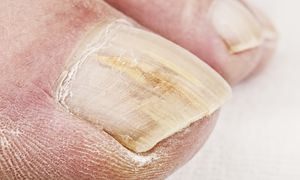If you’re like most people, you probably take your feet for granted. But what if one day you started to experience some unusual symptoms on your feet? Thick, discolored nails could be a sign of toenail fungus. While the condition may not seem serious, it can be challenging to treat and embarrassing to have. Toenail fungus is a common infection that affects the nails of your feet. The fungus lives in warm, moist environments, often affecting the toenails. You may first notice that your nails are thicker than usual or discolored. The infection can also cause your nails to break easily or peel back from the nail bed. If you have toenail fungus, you should book an appointment with a specialist in toenail fungus in Bakersfield.
Causes of Toenail Fungus
Several things can increase your risk of developing toenail fungus. One of the most common causes is moisture. The fungus has a perfect environment to grow if your feet are constantly wet. Trauma to the nail can also make it more susceptible to infection. This can include anything from a sports injury to a cut on your toe. Poor hygiene can also contribute to the development of fungus. Sweat and bacteria can build up on your feet, providing the perfect environment for growing fungus.
Symptoms of Toenail Fungus
If you think you may have toenail fungus, there are a few symptoms you can look for. The most common sign is thick, discolored nails. Your nails may also be challenging to cut and may break easily. The infection can also cause your nails to peel back from the nail bed. If you have any of these symptoms, you should book an appointment with a specialist in toenail fungus.
Treatment
There is no one-size-fits-all treatment for toenail fungus. Treatment options include oral medications, topical treatments, and laser therapy. Oral medications may be the best option if your infection is severe. However, they can often cause side effects like nausea and liver damage. If you’re uncomfortable with taking oral medications, you may want to try a topical treatment. These treatments are applied directly to the nail bed and can effectively clear up the infection. However, they may not be as effective if the fungus has spread beyond the nail bed. If your infection is severe or doesn’t respond to other treatments, you may want to consider laser therapy. This treatment uses a laser to kill the fungus and clear up the infection.
Prevention
There are several things you can do to prevent toenail fungus. One of the best ways to avoid the infection is to keep your feet clean and dry. You should also avoid going barefoot in public places. If you go barefoot, make sure you dry your feet thoroughly when you get home. You may also want to consider using a foot powder or an antifungal spray. If you have diabetes, you should take extra care to keep your feet clean and dry.
To summarize, toenail fungus is a common infection that affects the nails of your feet. The fungus lives in warm, moist environments, often affecting the toenails. You may first notice that your nails are thicker than usual or discolored. The infection can also cause your nails to break easily or peel back from the nail bed. If you have toenail fungus, you should book an appointment with a specialist in toenail fungus.
